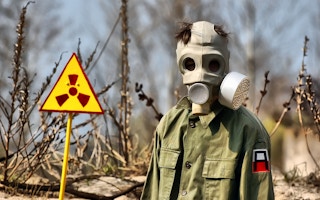Nothing divides opinion quite as much as the debate about nuclear power. The arguments over the consequences of the world’s two worst nuclear accidents − Chernobyl, 30 years ago today, and Fukushima, five years ago last month − show how deep and wide the gap between the sides can be.
The dispute matters, because anti-nuclear campaigners are accused of scaremongering to try to kill off the nuclear power industry, which its supporters say is vital if catastrophic climate change is to be avoided.
Pro-nuclear lobbyists say it is safe and clean compared with fossil fuels. Some claim that hydropower and wind power kill more people than nuclear energy, and the World Nuclear Association says the Fukushima accident has killed no one.
The one point both sides agree on is that these two catastrophic accidents had completely different causes.
The Chernobyl disaster in Ukraine, on the border with Belarus, was caused by human error − a safety test that went wrong. It was worsened by the Soviet Union’s attempt to cover it up, exposing far more people to dangerous radiation than need have been.
Long-term effects
In contrast, the Fukushima meltdown in Japan was caused by a natural disaster − an earthquake and tsunami so huge that they killed thousands of people, as well as knocking out a whole family of nuclear reactors on the coast.
But while the causes may have differed, the consequences have been remarkably similar, both in the long-term effects on the countries concerned and in the disputes the disasters have triggered.
Although the Chernobyl explosion and fire occurred three decades ago, the argument about how many people died, and how many still die, continues to rage. Pro-nuclear scientists and lobbyists argue that as few as 45 people were killed, while others put the estimate of extra fatalities, mainly from cancer, at 40,000.
Around seven million people in Europe were showered with radioactive fallout. But how do you measure the consequences?
“
The most difficult problem of all is that the danger from both accidents continues to be a threat
to a much wider community
Estimates of the eventual Fukushima death toll from radioactivity are just as sharply divided, and there is no likely resolution.
Part of the problem is that deaths from cancer caused by the radioactivity released in these accidents are hard to distinguish from cancers that might have developed in any case – and it may be decades before they do develop.
In a totally open society, gathering data about deaths in excess of those expected anyway is difficult. But it is virtually impossible in secretive countries like Belarus.
The wind direction after the accident left Belarus with the most intensive Chernobyl fallout of any country, but the totalitarian government appears intent on hiding the consequences. This is partly, it seems, because it is building another Russian reactor.
Amid these arguments over fatalities, the other consequences of the disasters are almost forgotten. A 30-kilometre exclusion zone was established around Chernobyl because of the remaining high levels of radioactivity, and it is still in place. Even in a relatively sparsely populated area, this is a huge chunk of land lost to productive use. In total, about 350,000 people have had to be relocated.
At Fukushima, a 20-kilometre exclusion zone was imposed, but 164,000 residents were evacuated, and 100,000 of them have not returned home. There is little sign of them being allowed to do so.
In the long term, the most difficult problem of all is that the danger from both accidents continues to be a threat to a much wider community.
The Chernobyl reactor contains metal fragments, spent fuel and a least a ton of high radioactive graphite dust inside a crumbling concrete shell. If this collapsed, the cloud of dust would be particularly dangerous.
An enormous new sarcophagus (literally, a coffin) to encase the reactor is being built so that it can be wheeled into place over the entire existing structure. The cost is more than €2 billion, and this concrete shell is expected to be in place by the end of 2017, which is 12 years later than originally planned.
This containment measure is expected to last for a century before another solution has to be found – because Chernobyl will still be dangerous in a thousand years’ time.
Partial meltdown
At Fukushima, the situation is far worse. Radioactive water is leaking into the Pacific Ocean, and there is no idea yet how the four critically dangerous reactors can be made safe. Constant cooling is still required to prevent another disaster unfolding in the ruins of the plant, where there has already been a partial meltdown of the reactor cores.
So far, there is no way of solving the problem of how to make the cores safe. Hundreds of workers will be needed for decades just to prevent the spent fuel overheating and threatening another serious nuclear incident.
The ongoing costs for Japan will be enormous. In a crowded country, to lose a large area of productive land is a disaster. And the leaks of radioactive water mean that the fishing industry − so vital to the country − has lost some of its prime grounds.
The public is strongly resisting the recommissioning of the 44 nuclear reactors that were closed in response to the disaster. Although some have been brought back on stream, the future of many others remains in doubt.
The results of these disasters have led some countries, such as Germany and Italy, to abandon nuclear power. Elsewhere, they have meant tighter safety precautions to try to prevent future accidents on this scale.
The costs have made nuclear power far more expensive, and it is the economic penalty exacted by Chernobyl and Fukushima that may in the end kill the nuclear industry stone dead.

















